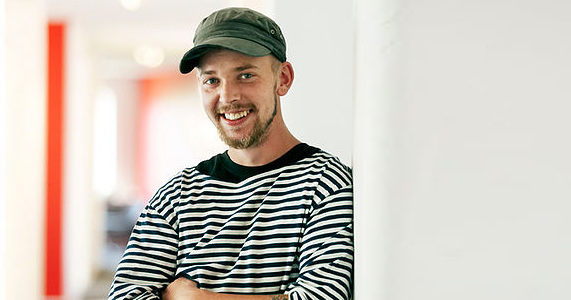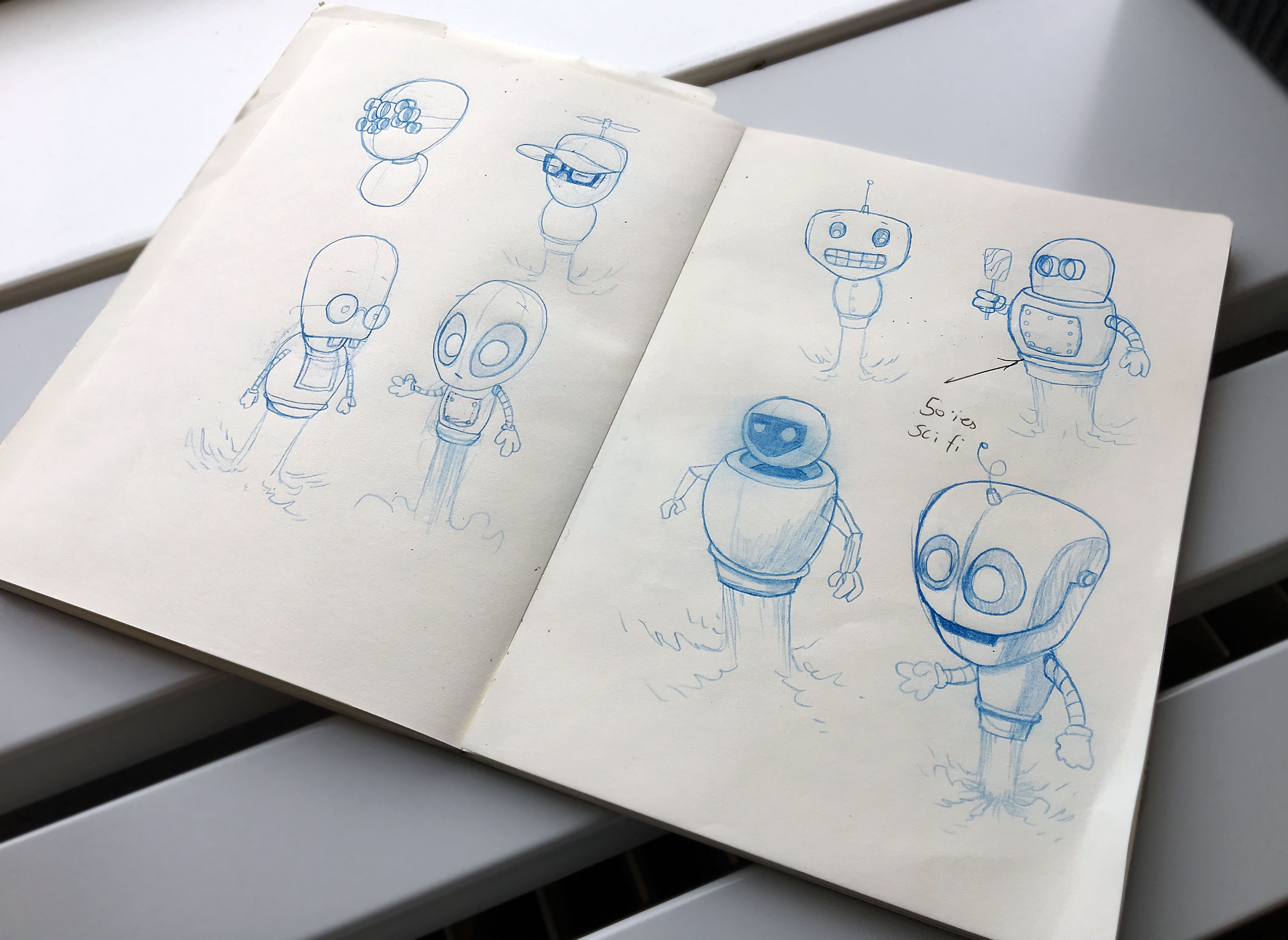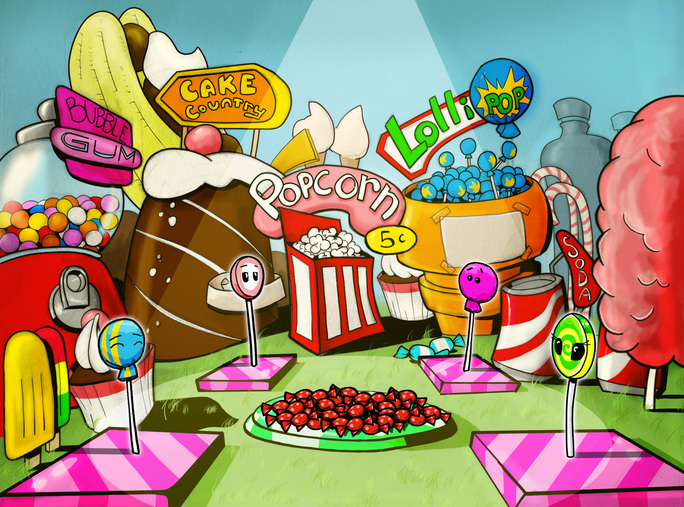
From comics to science
Apart from science and programming, there is also plenty of design work behind our games. Right now, we are focusing on the visual appearance, narrative and entertainment factor of our games more than ever before. One of the main forces behind our visuals is Tonni Tingholm, the graphic artist, and animator in our group.
Tonni has come a long way since his bachelor graduation from The Animation Workshop in character animation in 2010. First, he worked on movies for 5 years as a fresh graduate and then got into games and worked at Unity Studios where he started doing graphics instead of animations. Since then, graphics have taken up the majority of his time.
He landed in the ScienceAtHome developer team two years ago at the invitation of Lars Kroll, our development manager, who he previously worked with at Unity Studios. Since then there has been no stopping for him: he’s worked his way through most of our games and improved everything he has touched: Quantum Moves, Skill Lab, Potential Penguin...the list is long and some of the games haven’t reached the point of release yet. ScienceAtHome has now reached a new, exciting phase in our game development where the narrative is increasingly important and this is a great opportunity for Tonni to shine in collaboration with Mette, our narrative designer.
Work process
In a research group, it’s always a challenge when a new idea for a game comes up. Physicists coming with their research ideas and explanations that creates head-scratching for designers and the other non-physics experts. “Luckily, the game developers are smarter than me!”—says Tonni. They are taking the role of a mediator of some sort, ‘translating’ concepts towards people with less formal education in science, so the designer can take over the role of creating something nice and fun: entertaining and visually appealing Citizen science and educational games!
“Sit down with a sketchbook!”—the design process for Tonni always starts with a sketchbook and he starts drawing different ideas before transferring those into Photoshop or occasionally creating animated video prototypes. A process of iterations begins, including a contribution from the game developers in the form of giving feedback and discussing different ideas. It’s joint effort where they also decide if the game design should be 2D or 3D, depending on the particular settings.

Tonni's sketches of a character
Don’t fall in love with your first idea! All the games ended up at a different place than how the first sketches and concepts began. “Sometimes I feel like the first idea is perfect and then from the feedback I need to realize that maybe it’s not such a genius idea as I thought.”—says Tonni. Designing a new game is always a creative, organic process with many iterations which bring along many changes. So, the outcome is quite unpredictable from the first ideas and sketches. This is the place where anything can happen, even penguins can turn into dinosaurs.
Narratives
It is an exciting period of game development at ScienceAtHome as our developer group has grown quickly since last year. One of the new additions is Mette, who works with narrative design as well as Unity development. A new upcoming game will bring more narrative storyline than any of our previous games and hopefully this storyline will result in more engagement with our players. Mette and Tonni are collaborating in the design process, discussing the game characters, what expressions they should have to match the storyline. Though this kind of work deserves even more attention and time, essential deadlines are catching up on the developer team.
Design inspiration
Tonni has grown up on comic books and they are still a big influence on his work. Comic books are definitely not only for children, the readers graduate to more serious stories and appreciate the artistic work behind them: “Spiderman and X-men were my childhood, now I’m more into The Goon, written and drawn by Eric Powell. I’m impressed that he draws and writes himself for almost 20 years! I tried drawing comics myself but it’s just so much work! I wanted to do something else after a few weeks. It really needs to be a love-project if one is not paid for doing it. I prefer switching among different things instead of focusing on one project for a longer time.”

Game design prototype
He is also getting plenty of inspiration simply from the internet which is a giant open hub and mixing pot for all styles and interest, bombing the browsers with images all the time. “When I see something cool, I start thinking if I could implement that idea somehow into my work.” In his free time, he also likes working with 3D images and watching tutorials how they are made.
Stay tuned for new games coming soon, showcasing more of Tonni’s artwork, spiced with some witty narrative!
